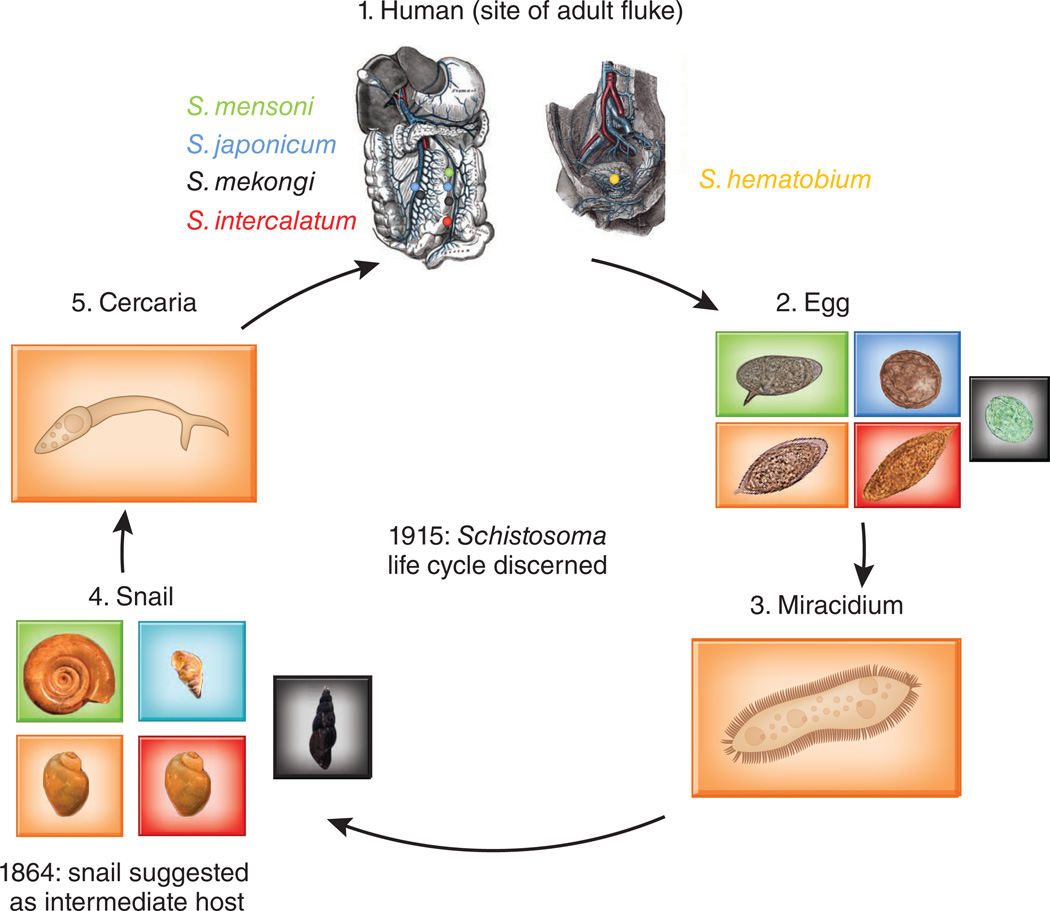Figure 1.
An overview of the schistosome life cycle. Schistosoma haematobium adults live in the veins of the vesical plexus around the bladder and along the ureters, whereas the adult intestinal schistosomes live in inferior and/or superior mesenteric veins around the walls of the large bowel, small intestine or rectum (1). Schistosome eggs (2) are transmitted in the urine (for urogenital schistosomiasis) or stool (for intestinal schistosomiasis) of infected individuals and hatch into miracidia (3), which infect snails (an intermediate host) (4). In the snail, the miracidia transform into sporocysts, which give rise to cercariae (5). The cercariae leave the snail, swim freely in the freshwater and infect humans by penetrating the skin.

